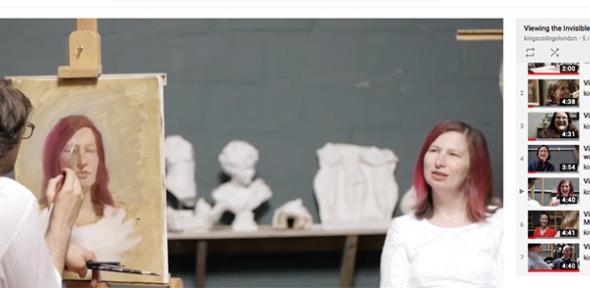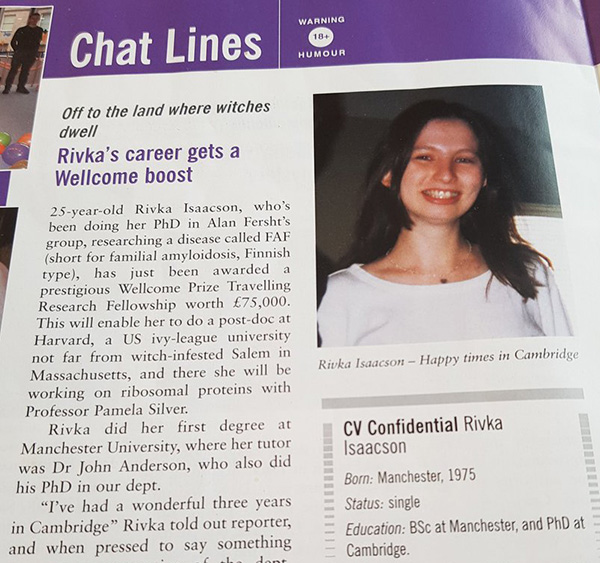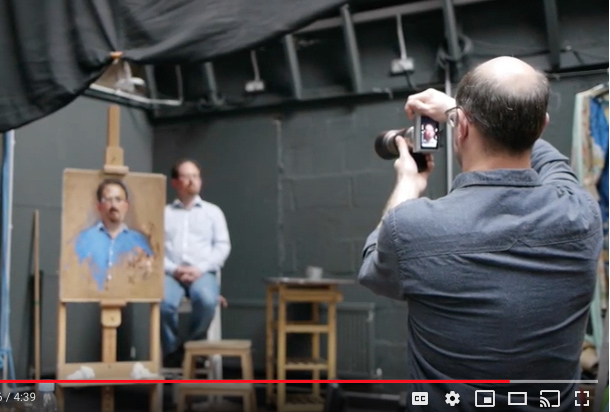
Two alumni of this department had their portraits painted for Viewing the Invisible - a BBSRC-funded project bringing scientists together with artists to explore the similarities in their working methods.

Dr Rivka Isaacson, a Reader in Chemical Biology at King's College London, and Dr Julian Huppert, now Director of the Intellectual Forum at Jesus College Cambridge, both sat for their portraits as part of the project. They were filmed discussing with the artists who painted them similarities in their approaches and working methods.
Rivka did her PhD here with Professor Sir Alan Fersht, researching the inherited gene-mutation disorder FAF (familial amyloidosis, Finnish type) before going as a post-doc to Harvard to work on ribosomal proteins (as reported in Chem@Cam in Winter 2001, right). Today, her research group uses biophysical techniques, with a focus on NMR spectroscopy, to determine macromolecular structure and interactions of molecules relevant to health and disease.
In the video, she quizzes artist Christopher Grey about how artists capture things that are not immediately visible. When he tells her how painters sometimes use highly unnatural colours - like bright purple - to add natural-looking highlights to a portrait to bring it to life, Rivka realises there's a similarity there with her own scientific work.
"We introduce special isotopes into our proteins to make them visible," she tells him. "In doing so, we can pinpoint a lot of molecular detail we would never be able to see in real life."
Julian did his PhD with Professor Sir Shankar Balasubramanian on the unusual four-stranded DNA structures known as G-quadruplexes that can function as genomic switches, turning genes on and off. His work used biophysical and computational methods to predict the formation of these structures, and has led to the identification of a large number of possible anti-cancer drug targets.

These videos, along with others from the project, are already available to view on YouTube. They will also appear in a multi-stranded exhibition alongside photographs, paintings, text and events that runs 2-20 September at Bush House Arcade in London. The exhibition is free and open to all.
The aim of the Viewing the Invisible project is to challenge the popularly-held belief that science and art exist at polar ends of a spectrum, say its organisers. "Through the close study of shapes and constituent parts, scientists and artists alike seek to demystify the human form. Viewing the Invisible showcases the ways in which both disciplines work together, exploring how scientists and artists can support each other in disseminating research and enriching creativity."
- Viewing the Invisible is a collaboration between King's College London and London Fine Art Studios with the support of the Biotechnology and Biological Sciences Research Council (BBSRC).

